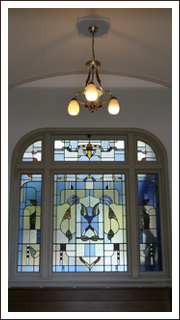 The National Sanatorium Nagashima Aisei-en was established on November 20, 1930 as the first national Japanese sanatorium for Hansen's disease (HD). At that time, HD was recognized as an infectious disease, but there was no effective treatment. Therefore, national policy called for the quarantine of people who suffered from HD. In 1948, an effective remedy for HD was discovered and it became curable. Despite this, the quarantine policy remained the law until 1996 when the Leprosy Prevention Act was repealed. Although all the residents in this sanatorium have been cured of HD, they have permanent damage to the peripheral nerves, which causes sensory and motor disability. At present, medical and nursing care for those with disabilities is the main task for Japanese sanatoria. Almost all the residents intend to spend the rest of their days in this sanatorium because of their advanced age and damaged relationships with their relatives.
The National Sanatorium Nagashima Aisei-en was established on November 20, 1930 as the first national Japanese sanatorium for Hansen's disease (HD). At that time, HD was recognized as an infectious disease, but there was no effective treatment. Therefore, national policy called for the quarantine of people who suffered from HD. In 1948, an effective remedy for HD was discovered and it became curable. Despite this, the quarantine policy remained the law until 1996 when the Leprosy Prevention Act was repealed. Although all the residents in this sanatorium have been cured of HD, they have permanent damage to the peripheral nerves, which causes sensory and motor disability. At present, medical and nursing care for those with disabilities is the main task for Japanese sanatoria. Almost all the residents intend to spend the rest of their days in this sanatorium because of their advanced age and damaged relationships with their relatives.
The prejudice against HD and discrimination against the patients is still deeply rooted. But the understanding of HD has significantly developed thanks to the lawsuit brought by patients demanding national compensation in 2001. We believe the history of Hansen's disease provides us with many lessons to create a world free of prejudice. It is our hope that the Nagashima Aisei-en Historical Museum will play a significant role in this.
Noriyoshi Yamamoto, MD, PhD
Director of NagashimaAisei-en

